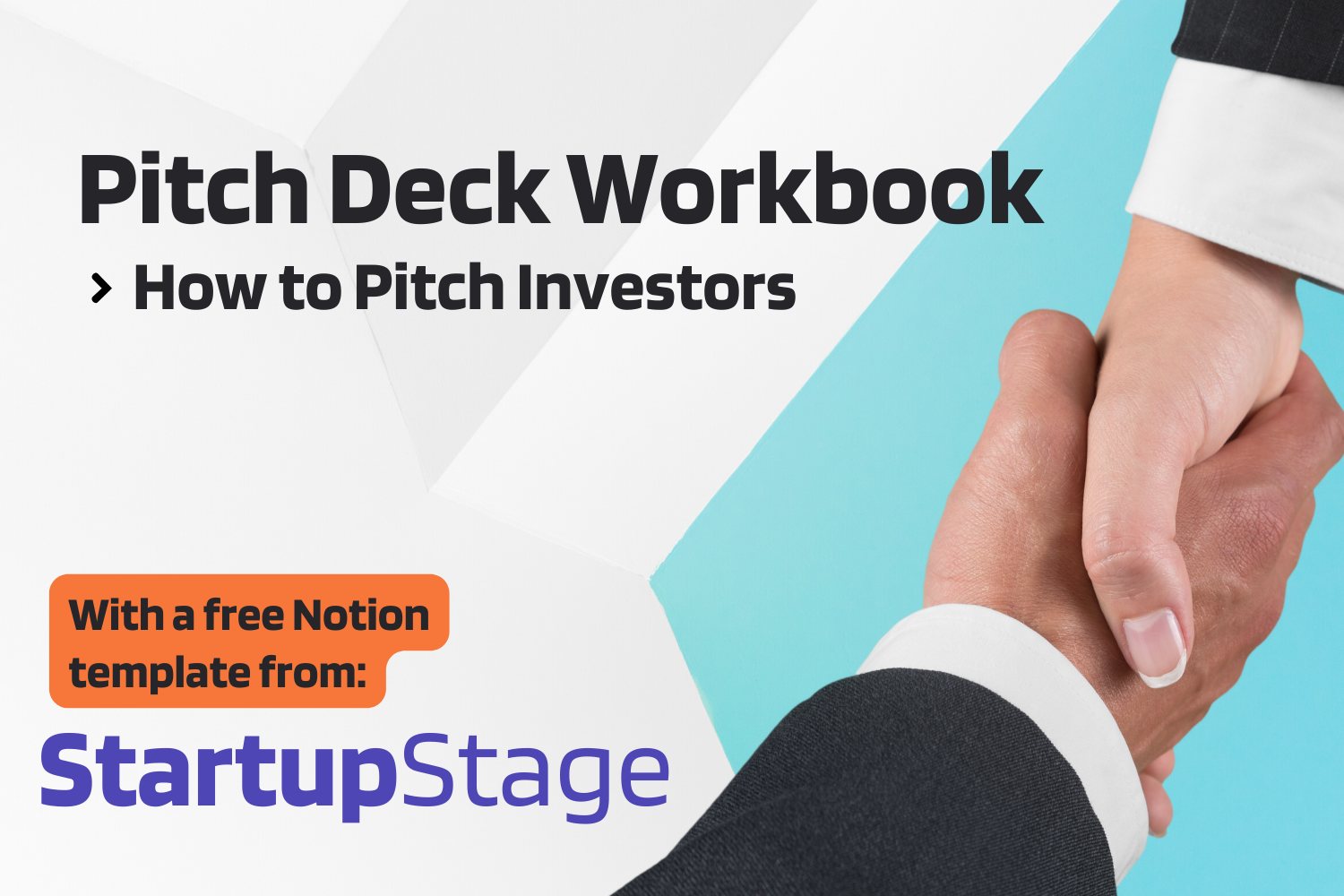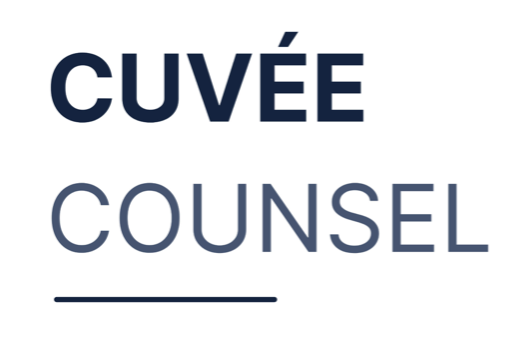
In this article we’re sharing some advice on how to pitch investors and get your company backed by the right people. We’ll cover some general fundraising advice, pitch deck guidance, and tips for when you're pitching.
Jump to the bottom to grab our free pitch deck workbook!
Fundraising Advice
Track your fundraise
Fundraising is largely a numbers game. The more investors you talk to, the greater likelihood of hitting your fundraising goal.
We suggest identifying at least 35 investors to reach out to, split into 3 tiers:
- Tier 1 (~ 5 investors) - Your most ideal investors, based on thesis match, testimonials of funded founders, strategic alignment, and any other metrics you value.
- Tier 2 (~ 15 investors) - Good, solid investors you would love to have on your cap table.
- Tier 3 (~15 investors) - Good investors who, for one reason or another, are less attractive to you than those in Tiers 1 or 2.
Note: We built a database to help you keep track of your investor outreach! It’s part of the Founder’s Pitch Deck Notion Template which you can download for free here.
Start with Tier 3 first. You don’t want to sit down with your Tier 1 investors until you have perfected your pitch. When meeting with investors in Tiers 2 and 3, pay close attention to their behavior during the pitch:
- Where are they asking the most questions?
- Where are you losing their attention?
- What concerns do they raise?
Use these learnings to adjust your deck and your presentation. Compile a list of the most frequently asked questions and create an FAQ slide in the appendix of your deck. This will save time and also demonstrate the self-awareness of any aspects that need further elaboration.
Let the market set the valuation
I don’t recommend including a valuation in your deck for priced rounds. You can (and should) have a valuation in mind, but this will often be a discussion between the founder and the investors. Besides, what if their initial offer is even more favorable than you were going to suggest? Don’t box yourself in.
Raise enough runway
You should aim to raise enough money to cover at least 18 months of runway, but no more than 36 months. 24 months is a sweet spot– this will provide 18 months of undistracted execution, and 6 months of raising the next round of fundraising.
Create urgency
Investors often need a reason to move. This is because they have every incentive to wait: Investors receive significantly more information about your company with every week that passes. Set a reasonable timeline for your fundraise and guide them towards a close date. Communicate often.
Pitch Deck Advice
KISS - Keep it simple, stupid
Nothing derails a pitch faster than confusion. Trying to communicate too much, or not communicating the idea clearly, is a recipe for glazed-over eyes. If there’s a simpler way to say something, say it that way. If there’s excess information that doesn’t add value to your story, cut it. Have a firm grasp of what point you’re trying to communicate and get to that point quickly.
How Many Slides Should a Pitch Deck Be?
Nearly all decks could benefit from being shorter. Remember that the goal of your pitch deck is to secure a meeting with the investor. Keep the deck to a maximum of 13 slides.
Similarly, many decks get tossed aside after the first 3-4 slides. Make sure you are grabbing attention early.
Hit the high points
While decks will vary from industry to industry, there are handful of questions that must be answered. Think these through ahead of time, and plan your deck with these answers in mind:
- What is the problem?
- How are you solving it?
- How big is the problem? (Market)
- How will you make money? (Business model)
- Why are you (and/or your team) the one to solve it?
- Why now? (Trends)
- What have you achieved so far? (Traction)
- What is the ask? (How much are you raising?)
Emphasize the Team
The earlier the stage, the more important the team slide. At young companies, an investor’s decision to invest or not largely comes down to the team. There’s too little traction and too many variables to confidently predict the success of the company. At the earliest stages, investors are betting on the team. Great teams find a way.
One Point Per Slide
Readers will only remember one thing from each slide. Keep slides to one point, and make sure that point is memorable.
Deliberate Design
The design of your pitch deck needs to be a priority. First impressions matter a great deal– if your deck looks sloppy and unprofessional, your company will be viewed as sloppy and unprofessional.
Spend significant time on the design. If you don’t trust your design skills, consider hiring a designer. It’s a worthwhile investment.
No Exit Slide
Ditch the “Exit slide.” This used to be a common slide where founders would outline their goals and timeline for an exit, whether that’s an acquisition, IPO, or otherwise. These slides tend to attract the wrong type of investors– those that will write you a check and then disappear for the next seven years while they wait for an exit.
Exit strategies are often speculative and subject to change, so they don't provide much useful information. It goes without saying that the company will eventually seek an exit. By leaving out this slide, you can demonstrate your commitment to the daily operations of your startup.
Moat Notes
Some people recommend having a dedicated “Moat slide:” What makes your company unique? What unfair advantage do you have? What factors make it difficult for other companies to compete with you?
Rather than a separate slide, I like seeing these factors sprinkled throughout the deck. I have included a few examples (”Moat Notes”) throughout the workbook.
How to Pitch to Investors
Work on your introduction
Investors will often ask you to introduce yourself before jumping into the deck. You should practice this intro! This should be a compelling story that highlights your accomplishments and touches on your connection with the industry or problem. The more recent accomplishments should be emphasized. Don’t spend minutes talking about your college days (unless, of course, you’re a recent grad or still in school). Aim for a 3-4 minute introduction.
Ask good questions
The investor will likely give an introduction as well. This will likely be the basics: “we invest in [x] stage, in [x] region, in [x] industry.” If they welcome questions, dig deeper: How do you work with your portfolio companies? Can you share a time when a company was struggling and how your firm worked with them to succeed? What is your decision-making process for pro-rata and reserves like?
Keep it lean
Don’t have more than two members of your team on the first call. It’s distracting. If the investor is interested, they will ask to meet the rest of the team in subsequent meetings.
Conclusion
There you have it: My high-level advice for how to pitch to investors. If you’re looking for slide-by-slide guidance, jump to any section below:
Pitch Deck Guidance Glossary
- Cover Slide Pitch Deck
- Problem Slide Pitch Deck
- Solution / Product Slide Pitch Deck
- Traction Slide Pitch Deck
- Business Model Slide Pitch Deck
- Go To Market Slide Pitch Deck
- Market Slide Pitch Deck
- Competition Slide Pitch Deck
- Team Slide Pitch Deck
- Ask Slide Pitch Deck
- Closing Slide Pitch Deck
Free Pitch Deck Workbook
We’re excited to share the release of The Founder’s Pitch Deck: a workbook-style Notion template with slide-by-slide guidance and inspiration.
Here’s what’s included:
1. A step-by-step Notion workbook guiding you through every slide of your pitch deck.
2. A built-in note-taking system to capture your ideas and inspirations.
3. An automation feature that presents you with a summary of your notes, ready for your pitch.
4. A selection of customizable Canva slide templates to create visually stunning presentations.
5. A comprehensive Notion database to keep track of your fundraising journey.
We want to get your company backed by the right people, so we’re making this resource completely free. Click here and then click "Duplicate" in the upper righthand corner.
Why did we build this?
Have you ever heard the phrase “measure twice, cut once?” This old adage encouraged carpenters to check their measurements twice before cutting wood. If the measurement is wrong, you’ll have to cut again– wasting time, materials, and money.
Measure twice, cut once
Nowadays, the phrase has evolved to demonstrate the importance of planning before diving in. I can tell you firsthand how difficult it is to work on content and design simultaneously. At least for me, I tend to get caught up in how everything should look, and lose sight of what message I’m trying to communicate.
It may seem counterintuitive to plan out your deck in Notion and then design it in another platform (Powerpoint, Google Slides, Canva, Figma, etc.). But trust me– Not only will this focus your attention on what you need to communicate in your deck, it will make the deck design process go much faster.
Take some time to nail your story before jumping into building the deck. You’ll be glad that you did.
StartupStage is the platform to showcase your startup and compete for features across our channels. Hit the button below to submit your company!

